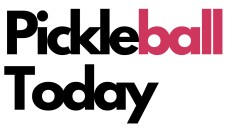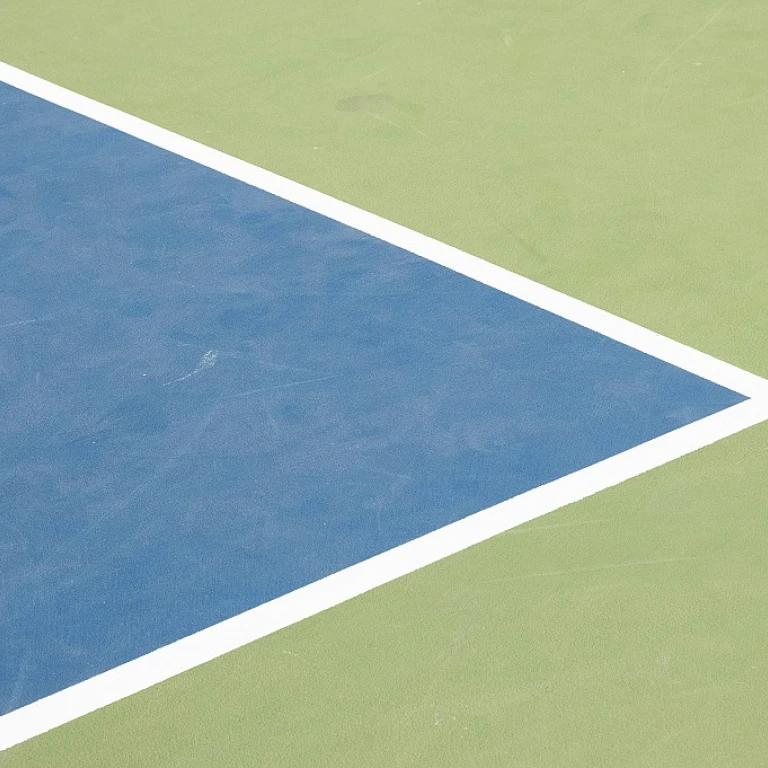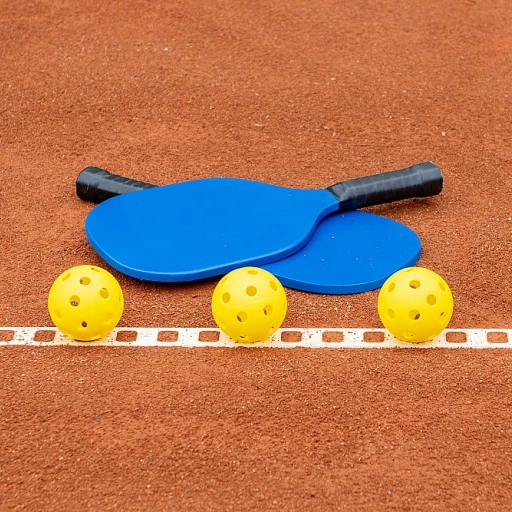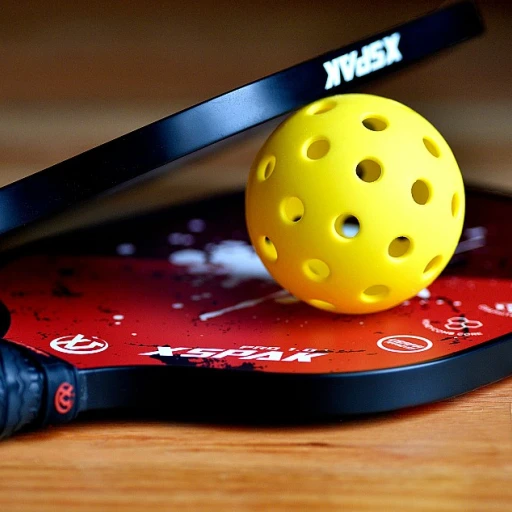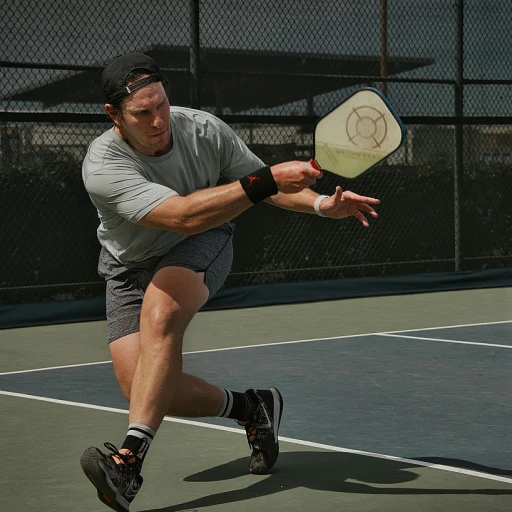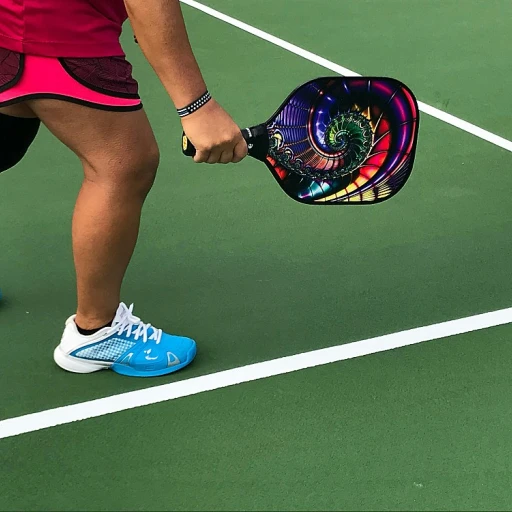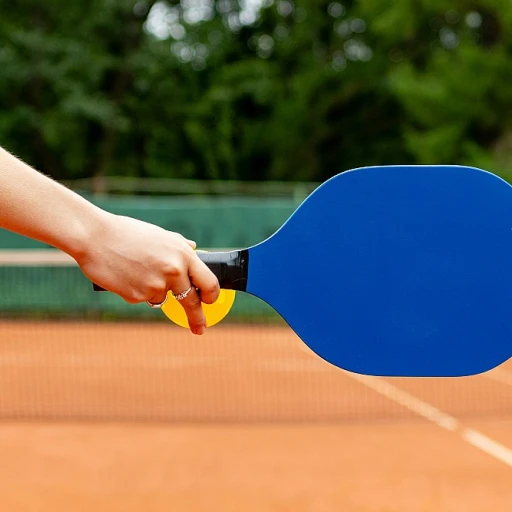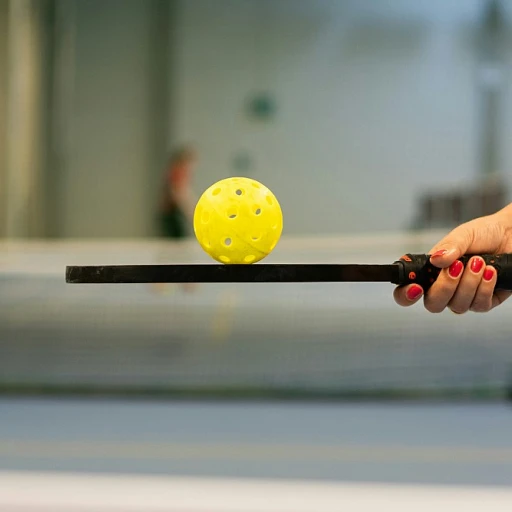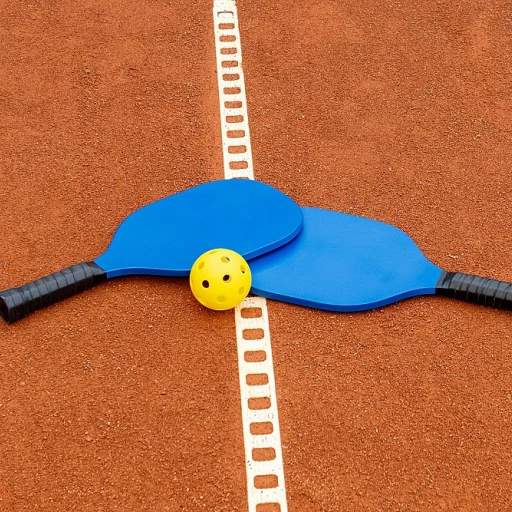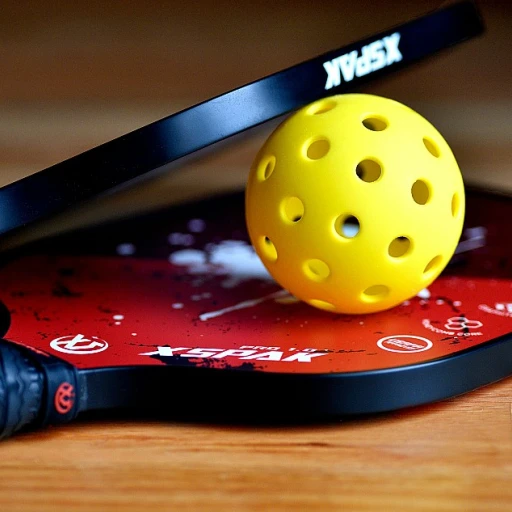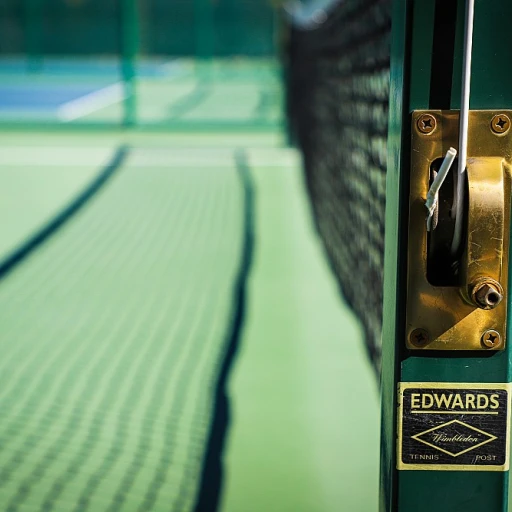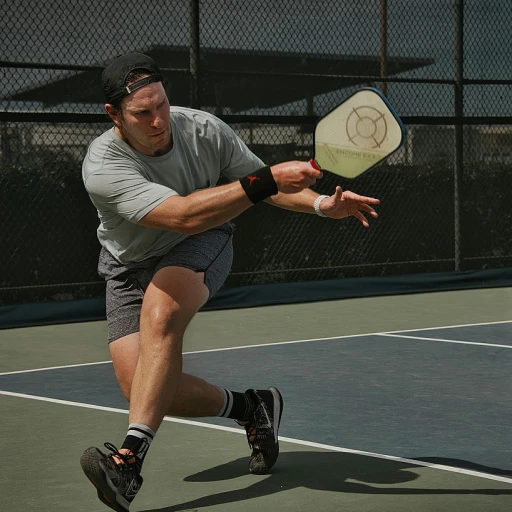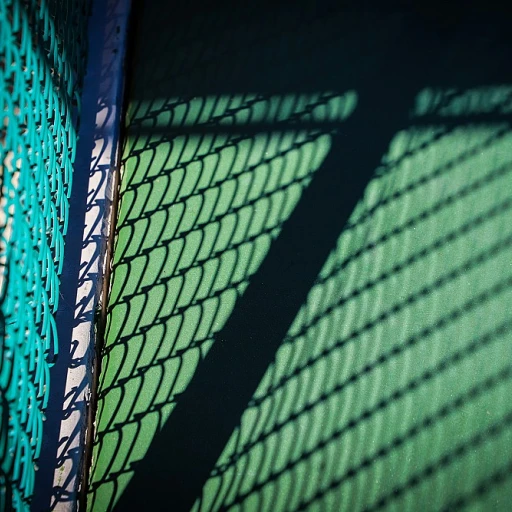
Understanding Pickleball
A Beginner's Guide to Pickleball
Pickleball is a rapidly growing sport that combines elements from various other paddle and racket sports. It is played on a court similar in size to a badminton court but incorporates a low net like tennis. The game uses a perforated plastic ball and paddles, designed specifically for pickleball, rather than the traditional rackets seen in tennis or badminton.
Unlike tennis, where a smaller group of tennis players control the game, pickleball can be enjoyed by a wide range of players, from beginners to advanced athletes. The sport requires quick reflexes and good hand-eye coordination, similar to badminton and table tennis. Each game is usually singles or doubles, making it a great social activity as well.
The objective is to score points by hitting the ball over the net into the opponent's court, awaiting a misstep. Techniques and shots, such as volleys and serves, are executed with precision to keep the ball within the court's boundaries. This makes pickleball a thrilling combination of strategy and physical agility, much like its sister sports, padel and squash.
While it stands on its own, pickleball draws a close resemblance to other sports like tennis pickleball, badminton pickleball, and pickleball padel. Those familiar with these games can easily transition into pickleball due to the shared skills and tactics. For those interested in understanding the nuances between each sport, exploring the difference between a wiffle ball and pickleball can provide further clarity.
Tennis: A Close Relative
Exploring Parallels Between Tennis and Pickleball
Tennis, often considered a close relative to pickleball, shares several similarities that make it an attractive option for those intrigued by this emerging sport. Both sports emphasize agility, quick reflexes, and strategic play, making them appealing to players who enjoy a fast-paced court experience.
On a technical level, tennis and pickleball both involve the fundamental principle of hitting a ball over a net. This makes them familiar to individuals who have crossed paths with racket sports at some point. While the court size differs, with tennis courts generally being larger, the concept of dividing the court into service and playing areas remains consistent. Those transitioning from tennis to pickleball often find the adaptation to the smaller pickleball court quite intuitive.
Another aspect that links tennis and pickleball is the shared need for proficient hand-eye coordination. Tennis players who are adept at controlling their shots can smoothly transition those skills to pickleball. Furthermore, both sports use paddles or rackets, albeit with pickleball using a specific pickleball paddle, which is crucial for impacting the ball's direction and speed during play.
However, the differences should not be overlooked. For instance, while tennis balls are typically weightier and involve more powerful shots, pickleball uses a lighter ball that can lead to longer rallies, emphasizing finesse over force. This contrast offers a refreshing variation for tennis fans exploring pickleball, allowing them to appreciate both the familiar and the novel aspects of each game.
Badminton: The Fast-Paced Cousin
Badminton: The Thrilling Speedster
Badminton shares a unique connection with pickleball. Both sports require quick reflexes and sharp hand-eye coordination, essential skills given the proximity of the net and the fast pace of the game. Players use a lightweight racket to hit the shuttlecock, which can travel at impressive speeds, providing a similar adrenaline rush experienced during intense matches on a pickleball court.
Unlike pickleball, badminton is played indoors, usually in a quieter environment. The game is played on a smaller court compared to tennis, resembling the setup of a padel or pickleball court, making it suitable for fast exchanges of shots across the net. The agility needed and the tactical precision of placing the shuttlecock in spots hard to reach for the opponent make it thrilling for those who love to strategize and outmaneuver their opponents.
For those wondering if they can transition from playing badminton to other racket sports like pickleball, the skill of maneuvering swiftly and maintaining balance aids greatly. If you are contemplating diversifying into different racket sports, choosing the right equipment like the pickleball paddle can make a significant difference in maintaining a stellar performance as you swap sports.
Also, the friendly atmosphere and social nature of both sports present a welcoming ground for badminton enthusiasts wanting to expand their horizons, explore new courts, and meet like-minded players. Embracing racket sports that offer a similar sense of rhythm and quick action—like squash, or even the indoor sibling, table tennis—serves as a fantastic opportunity to test out your reflexes and strategic prowess.
Table Tennis: The Indoor Sibling
Table Tennis: The Intimate Indoors Affair
Table tennis, often referred to as ping pong, may seem like the confined cousin to pickleball due to its indoor setting. Yet, it shares more than a few commonalities with its popular contemporary. At the core, both sports are variations of the same family: racket sports. They challenge players to exhibit quick reflexes and sharp hand-eye coordination. On a pickleball court, players navigate a much larger space than the compact dimensions of a table tennis setup. However, both games put a premium on anticipation and swift movements. Each sport utilizes a net, over which a ball is exchanged, demanding precision and skill. While pickleball is typically played outdoor with a paddle and a lightweight ball, table tennis players wield a smaller racket in an indoor environment. Shots in table tennis are executed with rapid flicks of the wrist, often just a few feet apart from the opposing player. This setting seems to compress the reactive dynamics seen in tennis or pickleball tennis but requires equally impressive skill and concentration. The indoor nature makes it an excellent alternative for those who love racket sports but perhaps seek a less physically demanding sports experience on the court. For pickleball enthusiasts drawn to strategic plays and intense footwork minus the expansion of a full-sized court, ping pong serves as a gratifying complement.Why These Sports Resonate with Pickleball Enthusiasts
Why Pickleball Enthusiasts Gravitate Towards Similar Sports
Exploring sports such as tennis, badminton, and table tennis unveils a strong connection with the favorite pastimes of pickleball enthusiasts. The similarities shared between these sports go beyond just their gameplay—it’s an alignment of strategic thinking, physical requirements, and the joy of the match.- Court Interactions: Whether on a pickleball court or a tennis court, players relish the competition and cooperation present in these sports. Similar court dimensions in sports like badminton contribute to familiar play styles.
- Racket Techniques: From badminton's fast-paced shots to tennis's dynamic rallies, the skill of handling rackets and paddles is central. Players often find that techniques learned in one sport enhance their performance in another, such as the graceful swings in pickleball and padel.
- Skill Development: Players of these racket sports often benefit from improved hand-eye coordination, quick reflexes, and sharpened strategic thinking. These skills translate seamlessly among tennis, table tennis, and squash, nurturing an athlete’s overall capability.
- Game Dynamics: Enthusiasts often appreciate the rhythmic exchanges of a game, whether played at the net in pickleball or with the sped-up rhythm of table tennis. The excitement found in the rapid transitions epitomizes the energetic appeal of these sports.
Choosing the Right Sport for You
Making the Perfect Choice for Your Athletic Journey
Choosing the right sport for you among similar pickleball games requires a good understanding of each discipline's nuances.- Pickleball: An accessible game played on a smaller court size, making it easier for beginners and seasoned athletes who appreciate a slower-paced strategy. With a unique approach that intertwines padel and ping pong, it offers a balanced mix of physical activity and tactical play.
- Tennis: Requires agility and stamina with its expansive courts, perfect for those who relish a full-body workout and have a knack for traditional racket sports. Ideal for tennis players who love the thrill of powerful shots and intricate footwork.
- Badminton: A fast-paced option with lighter equipment, suitable for those who enjoy quick reflexes and fast hand-eye coordination in a smaller playing area. Its dynamic nature might attract both badminton pickleball aficionados and badminton enthusiasts.
- Table Tennis: For those who prefer an indoor, smaller-scale game similar to pickleball, table tennis or ping pong offers an intense focus on precision and speed with a paddle, making it an excellent option for players who like the idea of strategic rallies.
